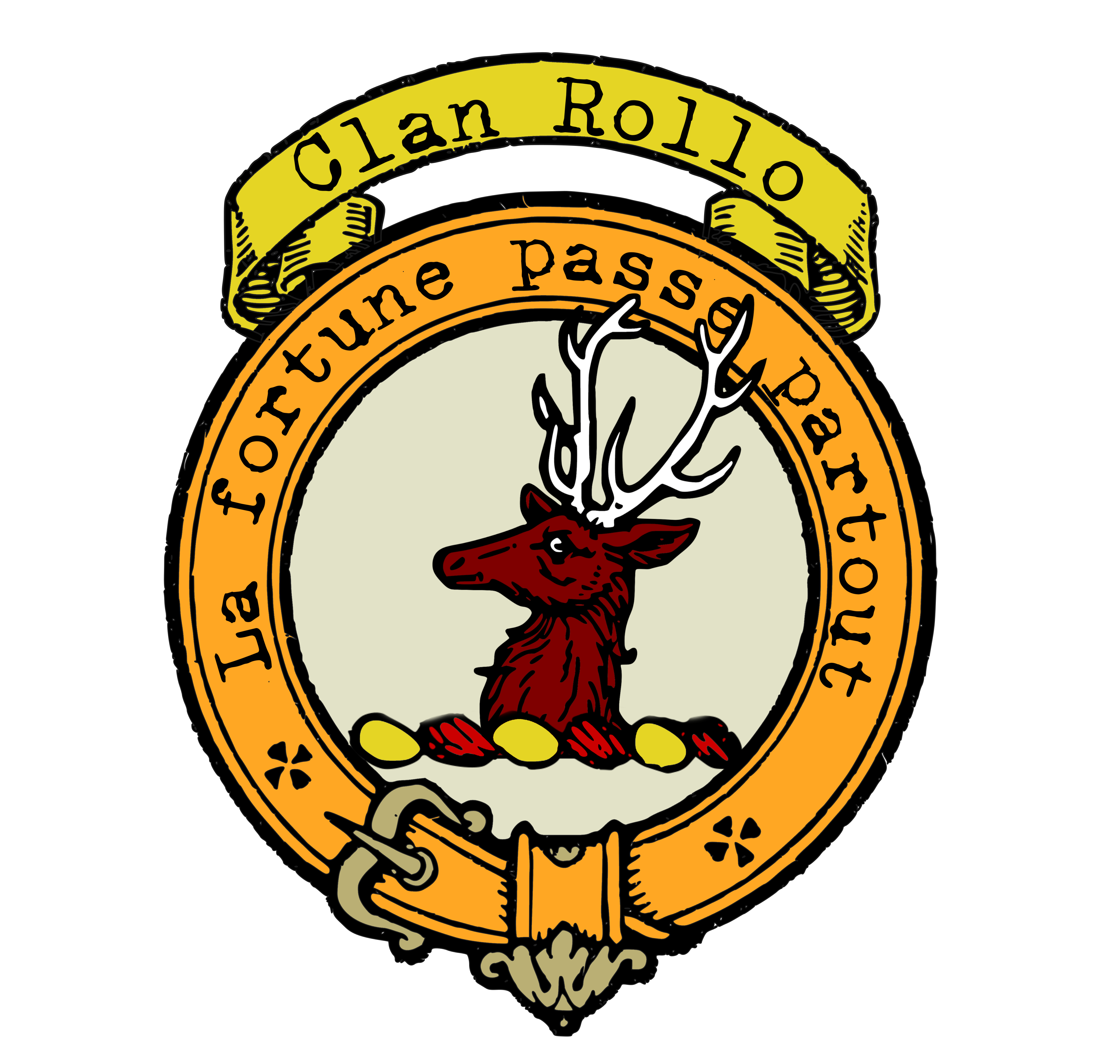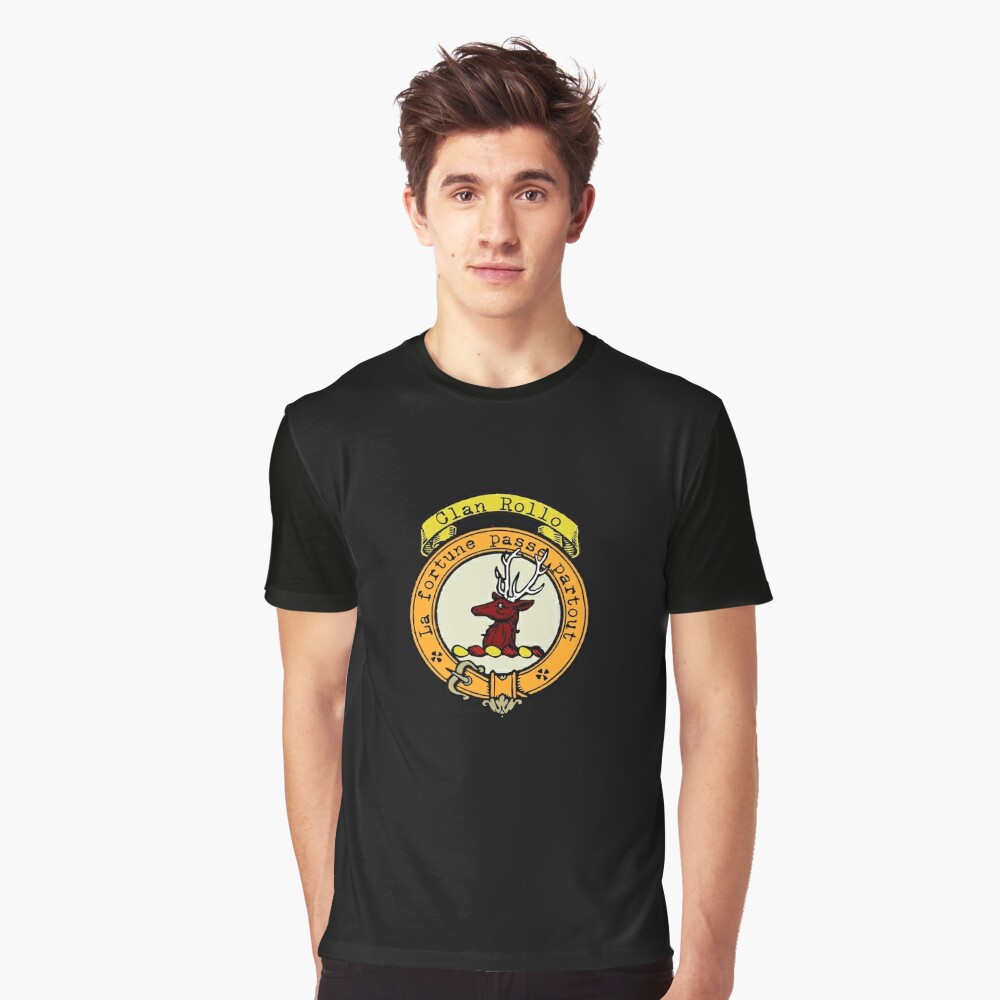Clan Rollo
|
|
CREST: A stag’s head couped Proper MOTTO: La fortune passe partout TRANSLATION: Fortune passes over everywhere VARIATIONS: N/A |
| The Rollo clan, like many families of Norman origin, traces its ancestry to the formidable Norsemen who swept across the seas in the 7th and 8th centuries. At the helm of their lineage was Sizurd Rollo, a Jarl of Shetland and Orkney. His son, Einar Rollo, etched his name into the annals of Viking history by not only raiding Scotland but also venturing further into his Norwegian homeland. Their fearsome reputation attracted the attention of none other than King Harald I of Norway, who harried Einar and forced him to shift his focus elsewhere.
Einar Rollo set his sights on the northern coast of France, marking the beginning of a new chapter for the clan. His descendants would go on to become the Dukes of Normandy, a lineage that would eventually leave an indelible mark on England. The year 1066 witnessed the arrival of Erik Rollo, who accompanied his uncle, William the Conqueror, during the pivotal Norman invasion of England. This momentous event would reshape the destiny of the Rollo family and establish their foothold in the British Isles. The Rollo name first appeared on record in a charter around 1141, granted by Robert de Brus. Black’s Surnames of Scotland lists various spelling variants for the name, reflecting the fluidity of language over the centuries. Notably, one Robert Rolloche obtained lands near Perth in 1369, marking the family’s presence in Scotland. The family’s fortunes took a significant turn in February 1380 when John Rollok, secretary to David, Earl Palatine of Strathearn and Brother of Robert II, received a charter for the lands of Duncrub. This marked the beginning of their ascent to Scottish nobility. Duncan Rollo of Duncrub, son of John, held the position of Auditor of State Accounts until his passing in 1419. William Rollo of Duncrub received a charter in 1511, elevating his lands to a free barony. The Rollos consistently demonstrated loyalty to their monarchs. They supported Charles II, and in return, Sir Andrew Rollo was granted the title of Lord Rollo of Duncrub. However, during the Cromwellian era, the family faced fines due to their royal connections. In the years that followed, the Rollo clan found themselves on both sides of political conflicts. While some members supported the Glorious Revolution of 1688, others were staunch Jacobites, actively involved in the events of 1715. The Rollos’ commitment extended to the battlefield. Andrew, fifth Lord Rollo, became a professional soldier, earning distinction in campaigns such as the capture of the French Caribbean island of Dominica and the securing of Canada. |
|
Citations:
|
|

Purchase @ Redbubble
Purchase @ Amazon.com
Purchase @ Amazon.co.uk

